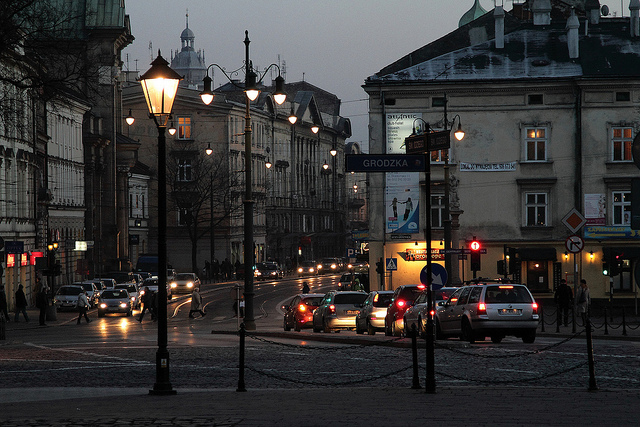Wallpapers For Computers Biography
Source(Google.com.pk)
In "Immaterial Value and Scarcity in Digital Capitalism," Betancourt proposed that the illusion of a rupture between physical and virtual production posed by the aura of the digital can be observed in the political economy of the United States, most especially in the Housing Bubble that bust in 2008. His analysis states that Financial "bubbles" are an inevitable result of a systemic shift focused on the generation of value through the semiotic exchange and transfer of immaterial assets.[5] This economy is marked by several features: (1) a disassociation between the physical commodity and its representation in financial markets that is global in scope, (2) a reliance on fiat currency, (3) a financialization of the economy based on debt.
Part of this analysis is a discussion of the relationship between affective labor and what he has termed "agnotologic capitalism." Affective labor is the enabler for a the creation of the bubbles that are characteristic of the digital capitalist economy. Where the reduction alienation of alienation is a precondition for the elimination of dissent. Affective labor is part of a larger activity where the population is distracted by affective pursuits and fantasies of economic advancement.Automation is a recurring theme in Betancourt's discussion of digital technology and capitalsm. In his discussion of the New Aesthetic, he argued that the transformations of production being created by computers and automated assembly lines belong to a larger shift in the digital capitalist eco The various artifacts brought together as the 'new aesthetic' are united by their orientation not towards human observation or functional utility, but rather by their invocation of productive values without human action -- the aura of the digital's separation of product from all that is required to produce it: labor, capital, resources. This transition point marks a shift from the fragmentation of the assembly-line where tasks are organized around the repetitive action of masses of human labor (itself an organization that implies semiotic disassembly and standardization) to an automated fabrication where the design is generated on digital machines and then implemented by other digital machines without human labor in the facture process; the necessity of human-as-designer thus comes into question as it is the only aspect of non-machine agency remaining, an element whose necessity is challenged by evolutionary algorithms and automated design.The replacement of human labor by automation poses a problem for capitalism according to Betancourt, because capitalism is dependent on the exchange of labor for wages that are then spend purchasing the production of that labor. With the elimination of labor by computer automation in what Betancourt has termed the law of automation Following the automation of physical production, the transformation of formerly intellectual labor by "autonomous production that began as a 'labor-saving' procedure now saves all human labor in/as the productive machine: it is this specific dimension of automated (immaterial) labor using digital technology that reflects an ideology of production-without-consumption."[8] The elimination of labor by automated labor presents a paradox for Betancourt's digital capitalism because the wages paid to workers for their labor is the basic element around which all of capitalism is built.Betancourt is a video maker whose movies are usually abstract and belong to the tradition of visual music. He has claimed these videos are related to his work as a theorist. [3] He has been exhibiting his work since 1992 when Archaeomodern screened at the Ann Arbor Film Festival, since then he has produced many videos that have screened on television, in festivals, galleries and museums.He has described his video Telemetry as a "documentary whose subject is those things that fall outside our direct perception. It adopts an abstract form precisely because what is represented has no direct physical form...instead our electronic intermediaries, satellite and deep space probes, send back numerical data we interpret intellectually to understand what it is like in those places we cannot go, what those things we cannot see look like.
Source(Google.com.pk)
In "Immaterial Value and Scarcity in Digital Capitalism," Betancourt proposed that the illusion of a rupture between physical and virtual production posed by the aura of the digital can be observed in the political economy of the United States, most especially in the Housing Bubble that bust in 2008. His analysis states that Financial "bubbles" are an inevitable result of a systemic shift focused on the generation of value through the semiotic exchange and transfer of immaterial assets.[5] This economy is marked by several features: (1) a disassociation between the physical commodity and its representation in financial markets that is global in scope, (2) a reliance on fiat currency, (3) a financialization of the economy based on debt.
Part of this analysis is a discussion of the relationship between affective labor and what he has termed "agnotologic capitalism." Affective labor is the enabler for a the creation of the bubbles that are characteristic of the digital capitalist economy. Where the reduction alienation of alienation is a precondition for the elimination of dissent. Affective labor is part of a larger activity where the population is distracted by affective pursuits and fantasies of economic advancement.Automation is a recurring theme in Betancourt's discussion of digital technology and capitalsm. In his discussion of the New Aesthetic, he argued that the transformations of production being created by computers and automated assembly lines belong to a larger shift in the digital capitalist eco The various artifacts brought together as the 'new aesthetic' are united by their orientation not towards human observation or functional utility, but rather by their invocation of productive values without human action -- the aura of the digital's separation of product from all that is required to produce it: labor, capital, resources. This transition point marks a shift from the fragmentation of the assembly-line where tasks are organized around the repetitive action of masses of human labor (itself an organization that implies semiotic disassembly and standardization) to an automated fabrication where the design is generated on digital machines and then implemented by other digital machines without human labor in the facture process; the necessity of human-as-designer thus comes into question as it is the only aspect of non-machine agency remaining, an element whose necessity is challenged by evolutionary algorithms and automated design.The replacement of human labor by automation poses a problem for capitalism according to Betancourt, because capitalism is dependent on the exchange of labor for wages that are then spend purchasing the production of that labor. With the elimination of labor by computer automation in what Betancourt has termed the law of automation Following the automation of physical production, the transformation of formerly intellectual labor by "autonomous production that began as a 'labor-saving' procedure now saves all human labor in/as the productive machine: it is this specific dimension of automated (immaterial) labor using digital technology that reflects an ideology of production-without-consumption."[8] The elimination of labor by automated labor presents a paradox for Betancourt's digital capitalism because the wages paid to workers for their labor is the basic element around which all of capitalism is built.Betancourt is a video maker whose movies are usually abstract and belong to the tradition of visual music. He has claimed these videos are related to his work as a theorist. [3] He has been exhibiting his work since 1992 when Archaeomodern screened at the Ann Arbor Film Festival, since then he has produced many videos that have screened on television, in festivals, galleries and museums.He has described his video Telemetry as a "documentary whose subject is those things that fall outside our direct perception. It adopts an abstract form precisely because what is represented has no direct physical form...instead our electronic intermediaries, satellite and deep space probes, send back numerical data we interpret intellectually to understand what it is like in those places we cannot go, what those things we cannot see look like.
Free Wallpaper Download For Desktop

















































